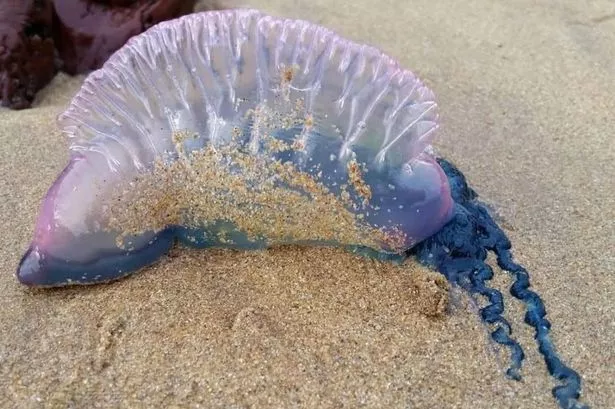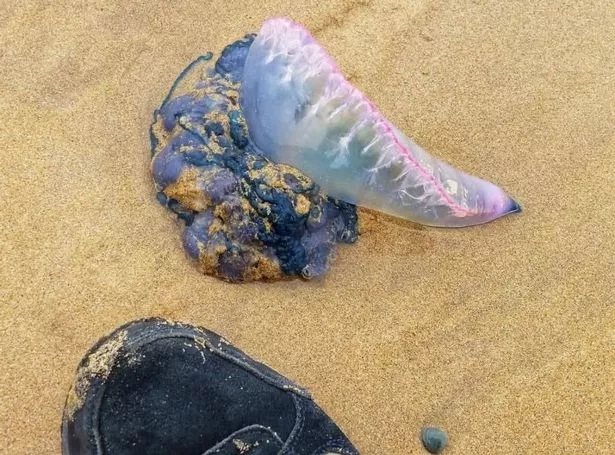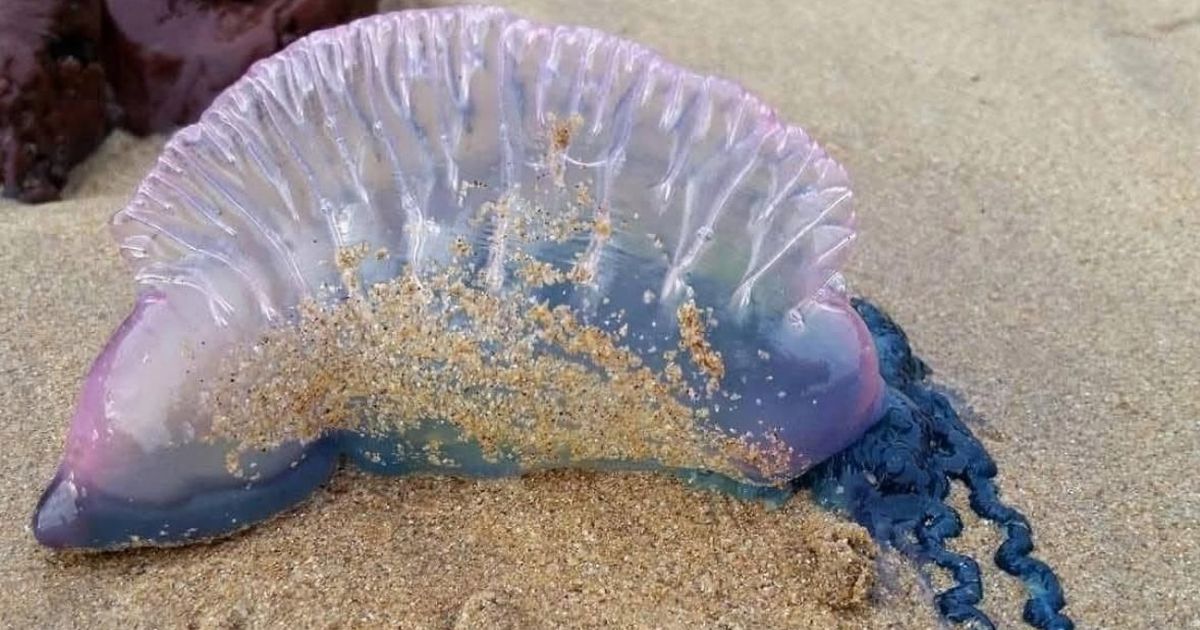The creatures look like jellyfish but their appearance is deceptive and their sting can prove fatal in some circumstances Portuguese Man o’ Wars were pictured in Pembrokeshire(Image: Gareth Davies Photography)
Portuguese Man o’ Wars were pictured in Pembrokeshire(Image: Gareth Davies Photography)
“Dangerous” marine creatures have washed up on Welsh shores, prompting urgent warnings for locals and visitors. Over the past few weeks, sightings of the creatures, nicknamed “floating terrors”, have been confirmed on multiple beaches, including several along the Pembrokeshire coast.
Confirmed to be Portuguese Man o’ Wars, they can be as beautiful as they are deadly. Despite their jellyfish-like appearance – featuring a translucent, balloon-like body and long, trailing tentacles – the Portuguese Man o’ War is not actually a jellyfish.
In fact, according to National Geographic, it isn’t even a single animal. The organisation states that the Portuguese Man o’ War is a siphonophore, a colonial organism made up of multiple individual creatures working in unison.
The different organisms within the colony perform specialised tasks such as feeding, reproduction, and defence. The result is a creature that can look deceptively simple but is biologically complex.
While these creatures might appear harmless from a distance, they pose a serious risk to humans and animals. The Portuguese Man o’ War’s sting is notorious for its excruciating pain, causing red welts and blisters to form on the skin. In some cases, the sting can lead to more severe reactions, including fever, shock, and interference with heart and lung function.
The Britannica website says that while deaths from Portuguese Man o’ War stings are rare, allergic reactions to the venom or cardiovascular complications can sometimes be fatal.
 Locals and visitors have been warned against going near the creature, which has a strong sting(Image: Gareth Davies Photography)
Locals and visitors have been warned against going near the creature, which has a strong sting(Image: Gareth Davies Photography)
Adding to the danger is the fact that even after the creature has died, its tentacles remain capable of delivering a sting. In some cases, detached tentacles that wash up on the beach have been reported to still possess venomous capabilities, meaning dead animals are just as dangerous as live ones.
Photographer, Gareth Davies, captured striking images of the Portuguese Man o’ War while visiting Freshwater West beach in Pembrokeshire. For the biggest stories in Wales first, sign up to our daily newsletter here.
The pictures prompted a wave reaction on social media. One person commented: “When I was a child they were frequently washed up on the Cardiganshire beaches… we were warned to never touch them but we were never banned from going in the water!!!!!!!!!!”
Another penned: “Wow! Only ever seen them in Australia! Give you a bloody nasty sting!!” One further added: “Tenby was full of these 5 years back”.
Beyond Pembrokeshire, locals in Cricceth and Harlech have also reported sightings of Portuguese Man o’ Wars. Criccieth Coastguard has since issued a safety notice urging caution; warning beachgoers to avoid coming into contact with the creatures and to remain vigilant when walking their pets along the shoreline.
“It has come to our attention that Portuguese Man o’ Wars have been seen on our shores here in Criccieth and Harlech,” the Coastguard statement read. “Avoid them because of their extremely toxic bites and take care of your animals as well! Even when the creature is dead or washed up on the beach, the sting can remain harmful for hours after.”
if you or someone else is stung by a Portuguese Man o’ War, it is important to seek immediate medical attention. Stings can cause severe pain, often accompanied by red, whip-like marks on the skin that can persist for several days. The coastguard also emphasises that if symptoms worsen, medical advice should be sought without delay.
For emergency situations or if you suspect someone has been stung, the coastguard encourages individuals to contact it immediately by dialling 999 and asking for the coastguard.
